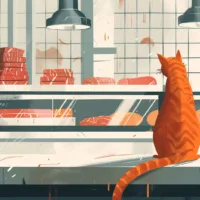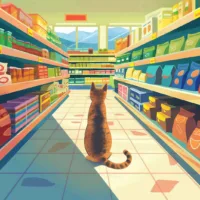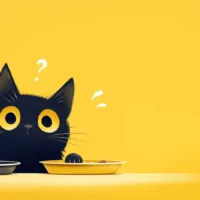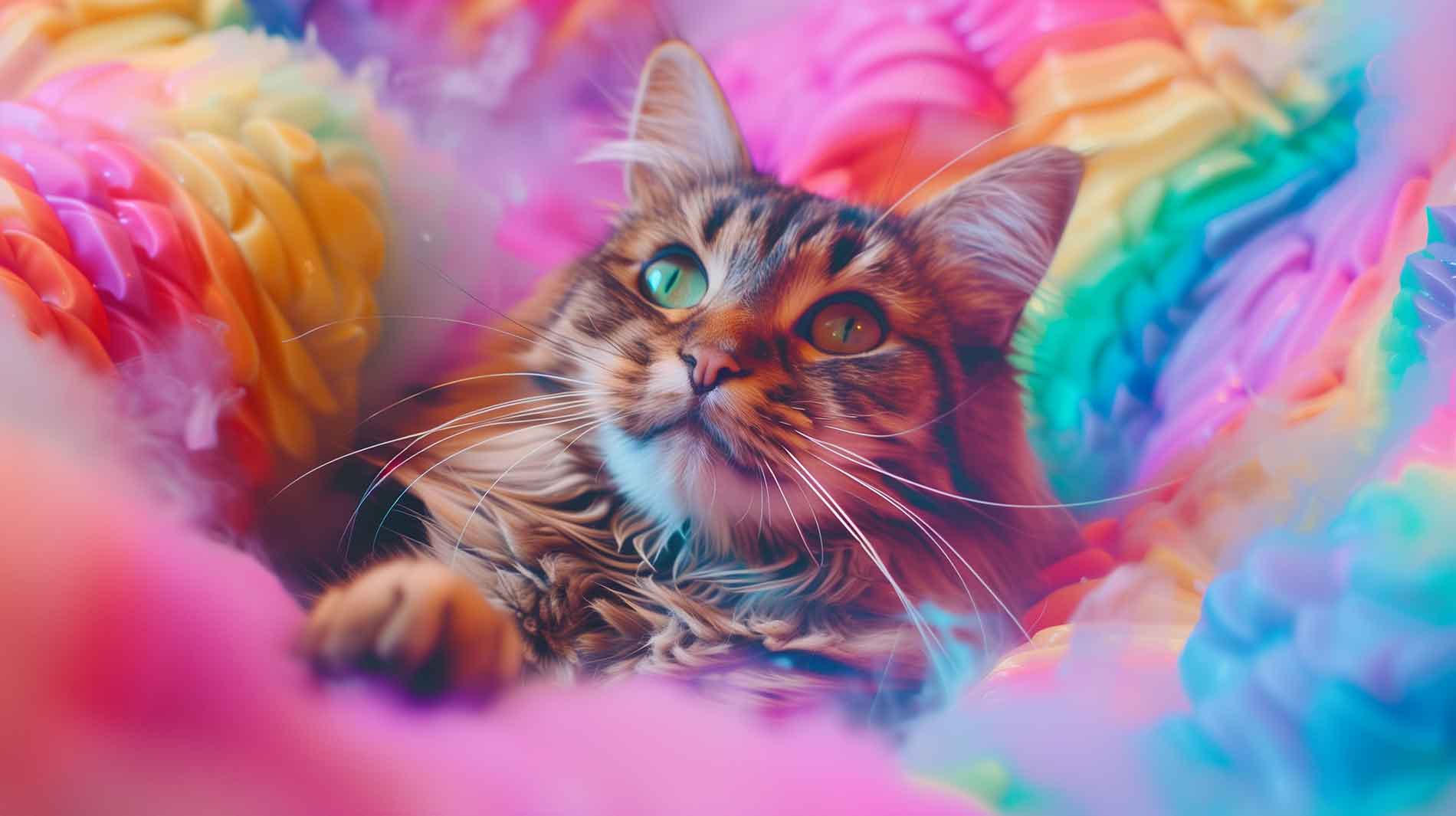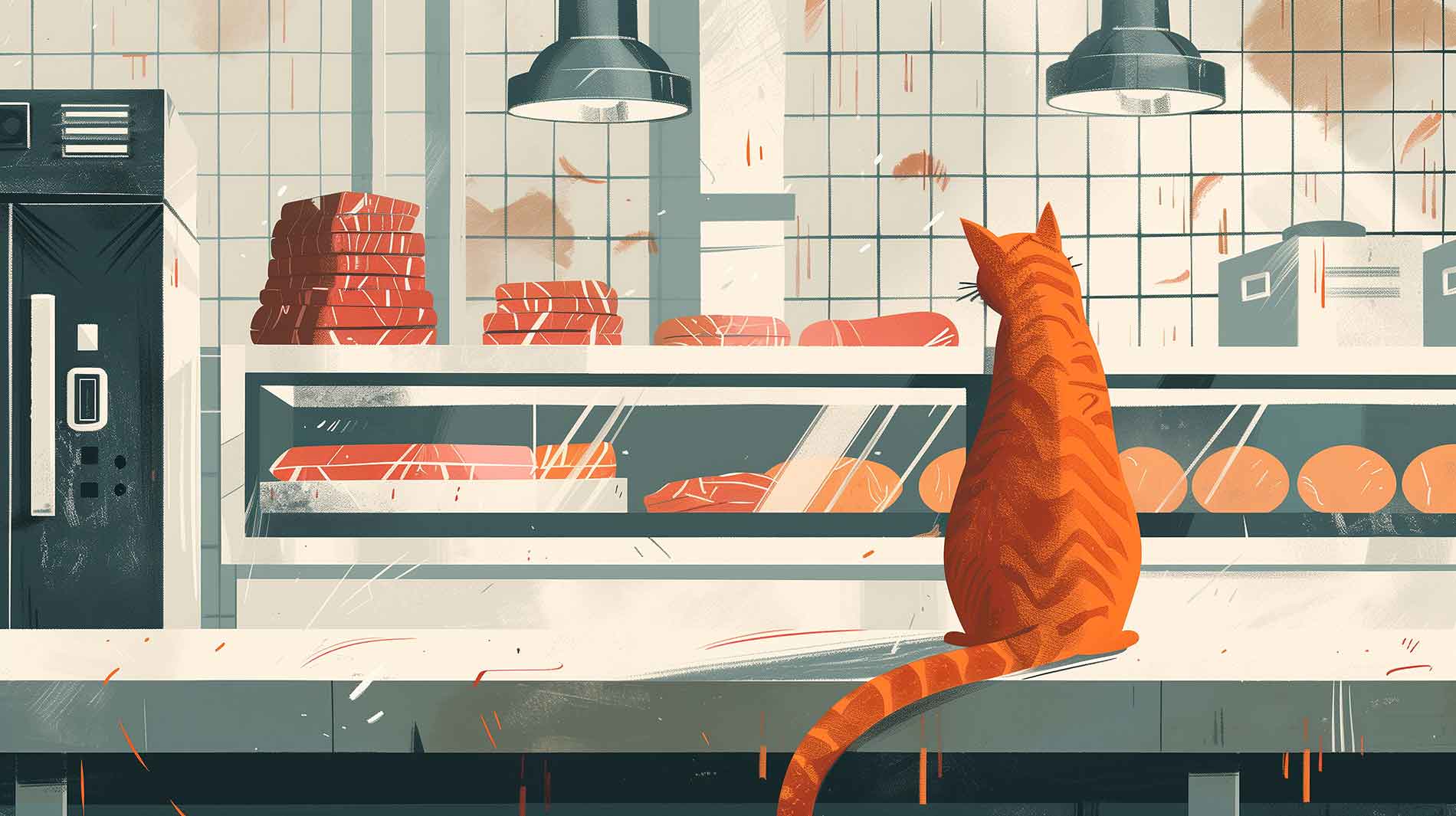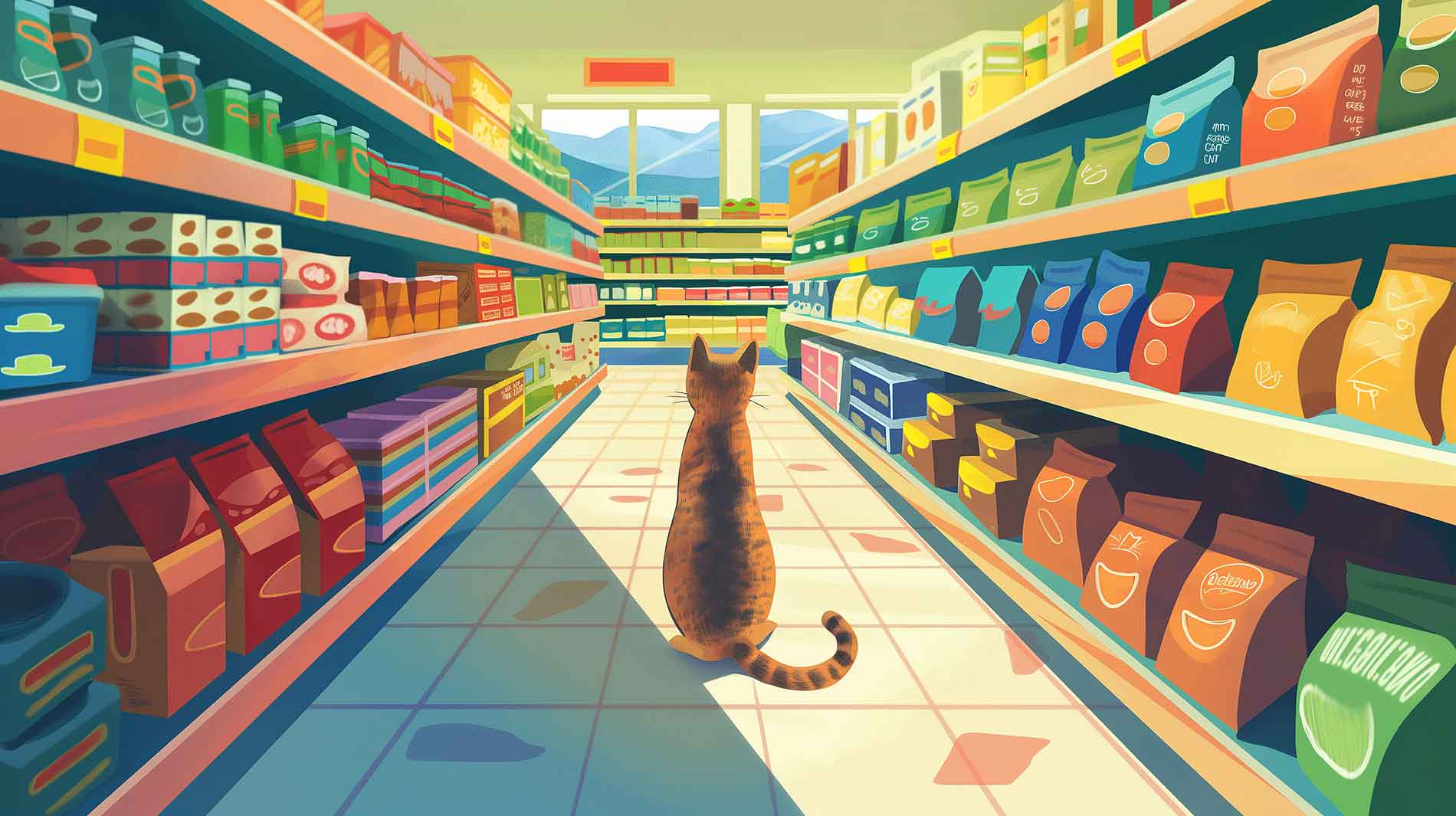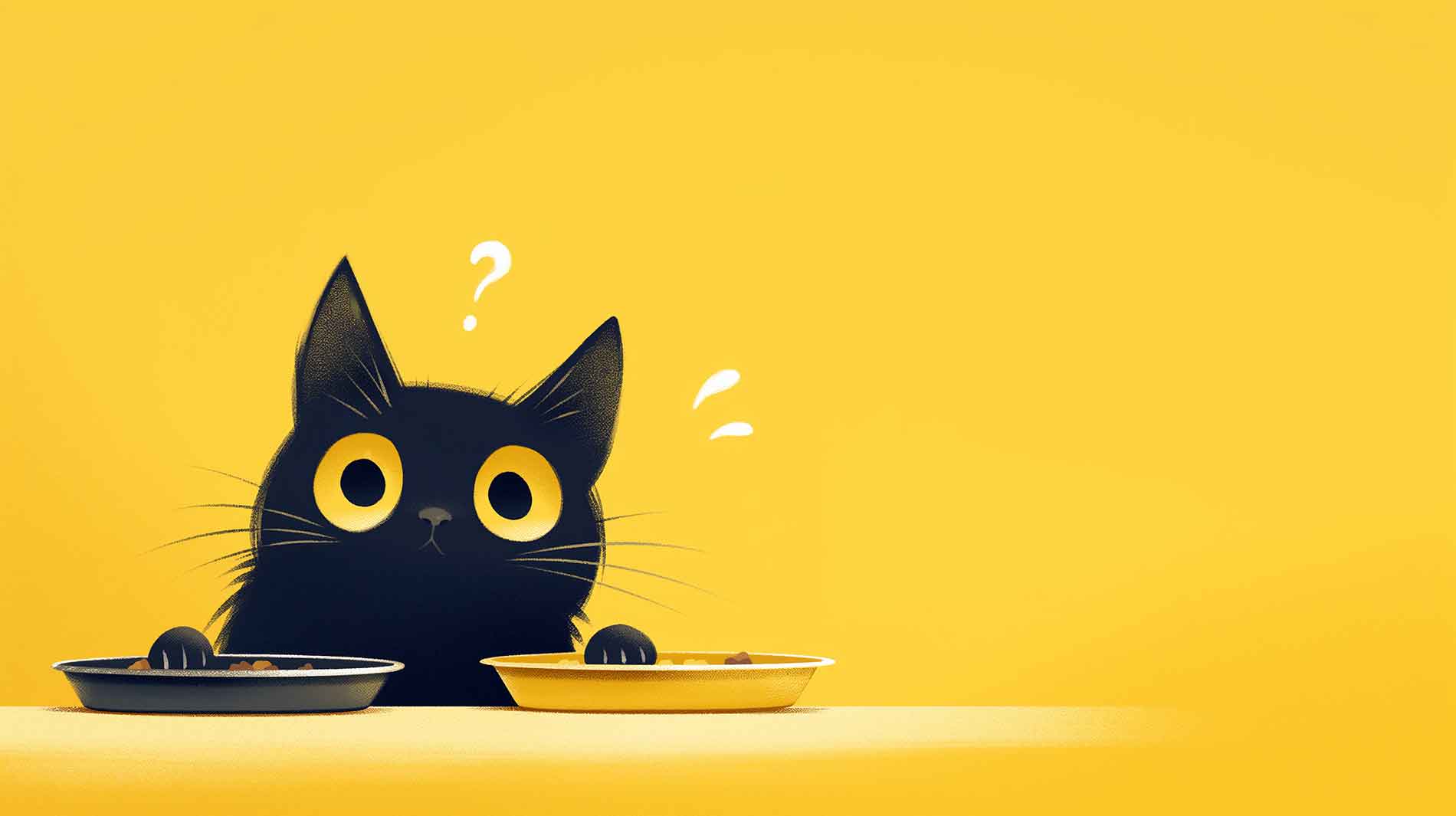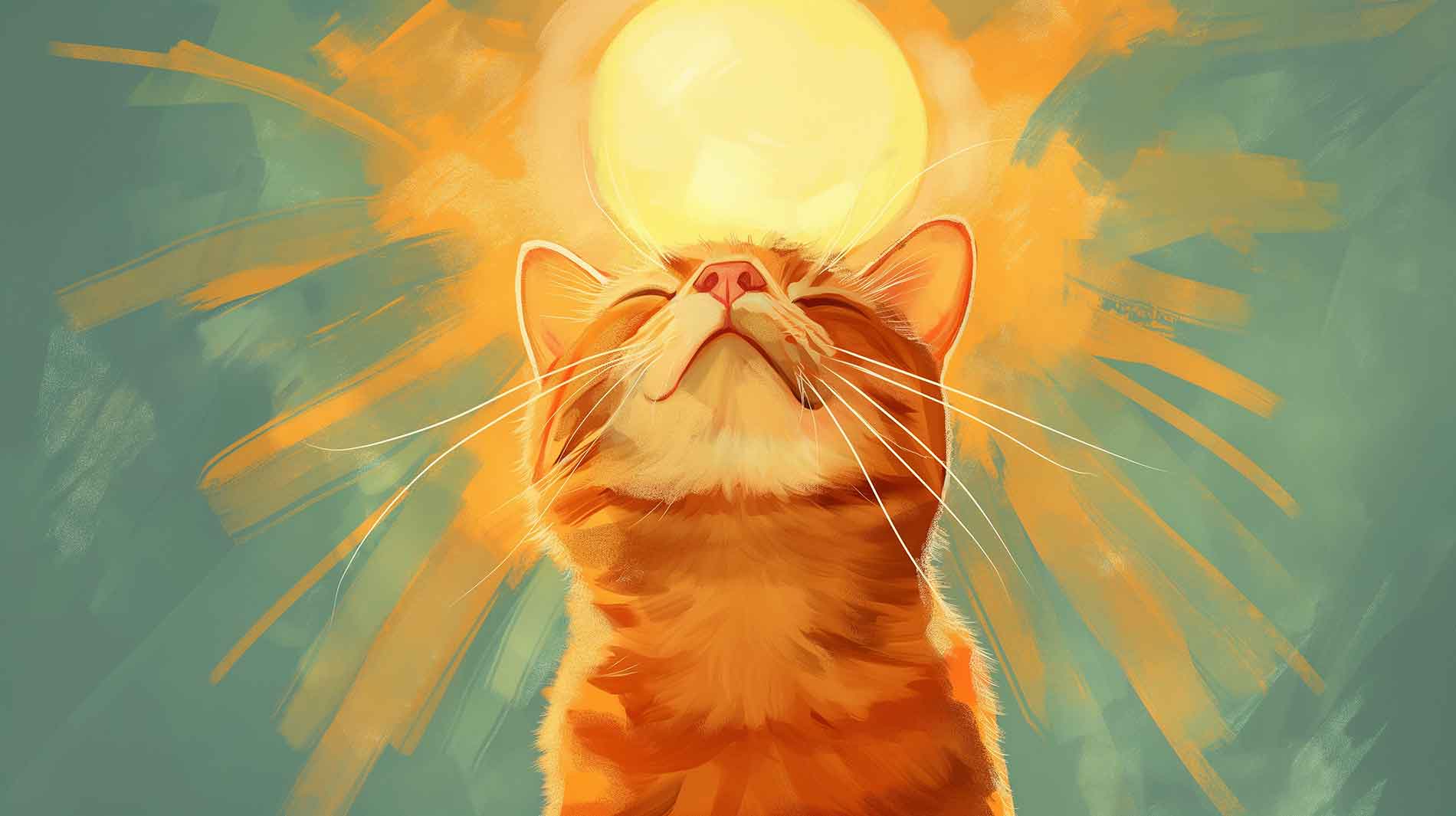One of the most frequently asked questions about cat nutrition is if or why cat food contains sugar. Is it bad for our cats’ teeth? Do they even need sugar as carbohydrates? Should cat food contain sugar? We investigate whether cats can digest sugar and other carbohydrates, whether they can become obese from them, whether it can lead to diabetes, and why or if sugar and carbohydrates are included in some cat foods.
Is it true that cat food contains sugar?
Yes there is sugar in cat food. Here is an interesting fact: ALL cat foods contain sugar, but not all contain added sugar and not all in the same amount. There are many varieties available that are formulated without added sugars but can still contain sugars through various ingredients. Sugars can still be present in the form of carbohydrates found naturally in certain ingredients like grains, vegetables, and fruits. For example, ingredients such as corn, peas, potatoes, and fruits like cranberries may contain natural sugars. These sugars may not typically be added, but are part of the overall carbohydrate content of the ingredients. Even though these natural sugars are present, they might not be listed as sugar on the ingredients list.
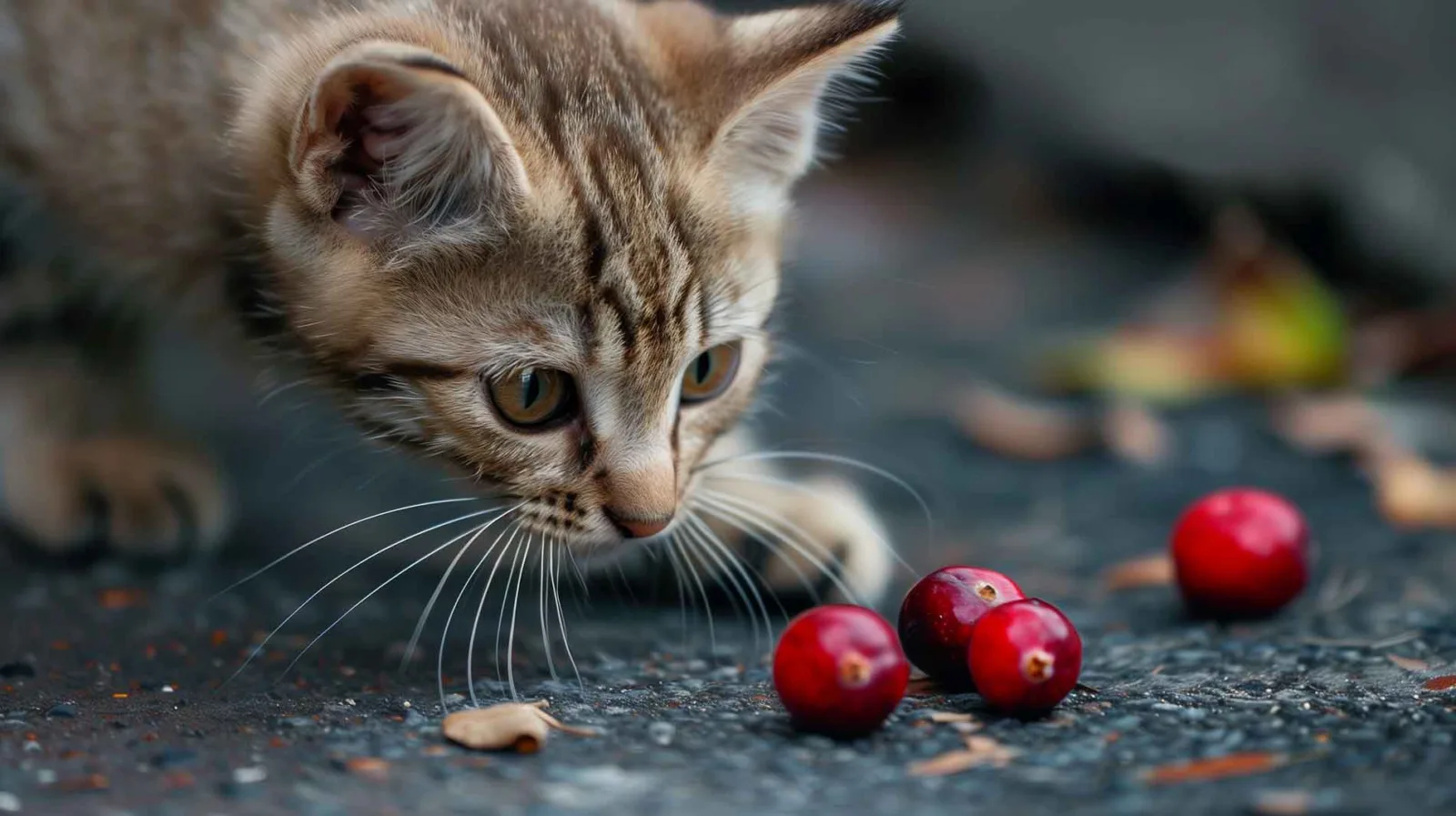
Small amounts of sugar in the form of glycogen, a form of stored glucose, may also be present in meat and muscle tissue. Glycogen serves as an energy reserve for the muscles and is broken down into glucose when needed. The amount of glycogen in meat varies depending on factors such as the animal’s diet, breed, and other physiological factors. However, the overall sugar content in meat is minimal compared to other food sources like fruits, vegetables, and grains.
Can cats taste sugar?
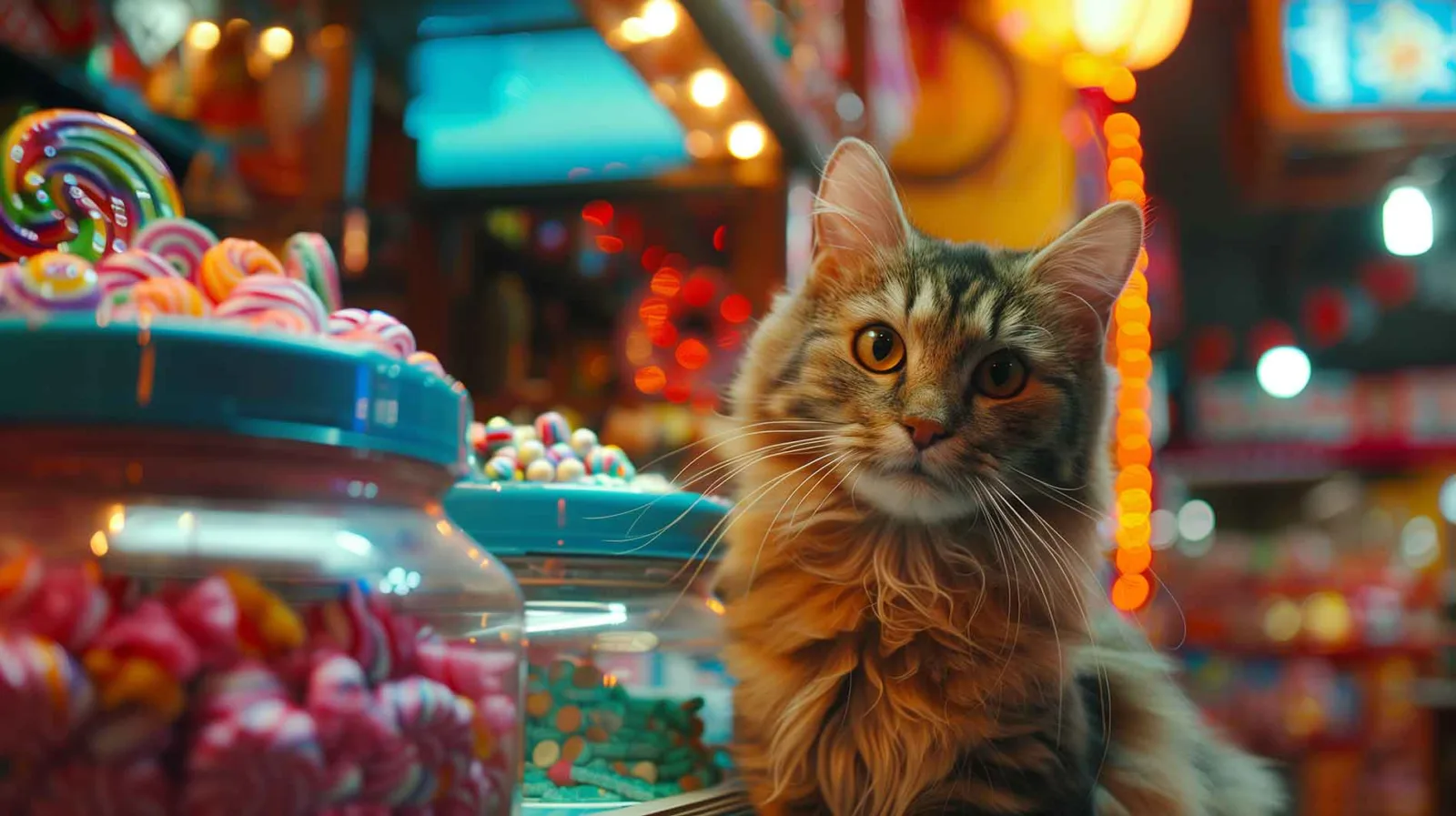
Cats cannot taste sugar as such. Due to their genes, they do not develop taste receptors for sweetness – unlike humans – which is why they are unable to perceive sweetness.4 While cats themselves do not have taste receptors specifically tuned to detect sweetness, they can still be attracted to certain flavors or ingredients that are associated with sweetness.
Why is sugar added in some cat foods?
When sugars or sweeteners are added to cat food, they can help balance or counteract any bitter flavors that may be present in certain ingredients. This can make the overall taste of the food more appealing to cats, even though they may not perceive sweetness in the same way humans do.
Some cat foods with sugars or sweeteners may have a more pleasing texture that cats enjoy. For example, wet cat foods with gravy or sauces may contain sugars or sweeteners to enhance texture and palatability. If sugar is heated in the food, it forms a brown color and roasted flavors. Without sugar, those cat foods would be much lighter or white. Some foods are fortified with carbohydrates in the form of starch to thicken the sauce. In dry food, sugar naturally occurs through the high amount of grains used. The amount is somewhere under 1% per 100g dry mass.1
While cats may not taste sweetness, the inclusion of sugars or sweeteners in cat food can still have an effect on the overall taste perception. Sugars or sweeteners can provide a masking effect by creating a contrasting taste profile – or changing the taste profile of other ingredients – that helps to offset or diminish the perception of for example bitterness. It provides a contrasting flavor profile that may make the overall taste experience more pleasant.
Is sugar in cat food bad for my cat?
Sugar is not considered a necessary or beneficial component of a cat’s diet. In fact, excessive sugar consumption can be detrimental to a cat’s health. Here are a few reasons why sugar in cat food is bad:
Sugar destroys important amino acids
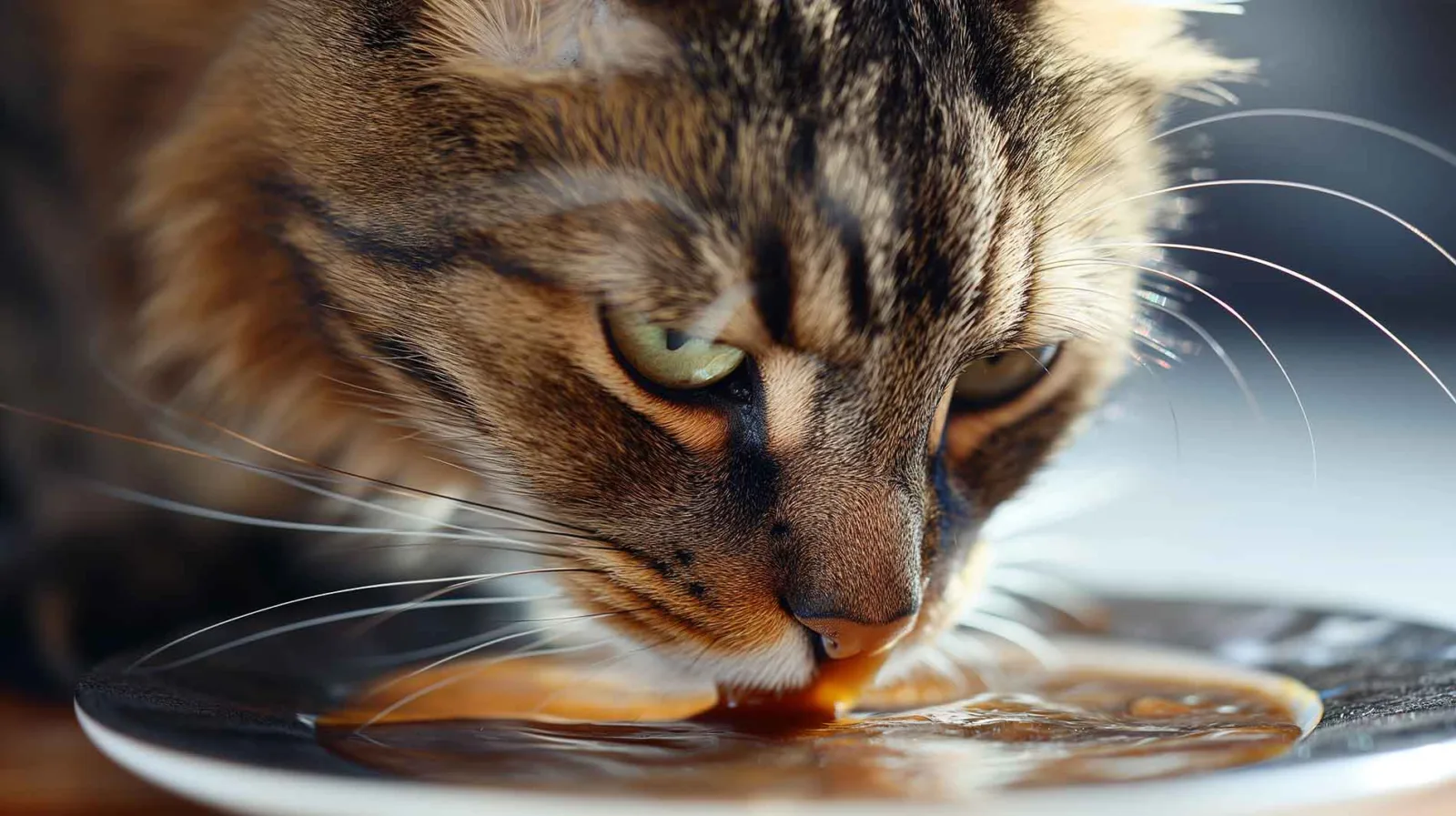
When sugar get heated it turns brown, this is called the Maillard reaction. It is a chemical reaction that occurs between amino acids and reducing sugars in the presence of heat. It’s named after French chemist Louis-Camille Maillard, who first described it in the early 20th century. This reaction is responsible for the browning and flavor changes that occur when foods are cooked. This can lead to changes in the composition of those amino acids and thus in the nutritional value of the proteins in the feed. In particular, the proportion of metabolically usable lysine in some foods may be reduced.2 Lysine contributes to muscle building, good immune defense, and healthy growth.
Furthermore, there can also be a reduction in the bioavailability of taurine in the food, as the Maillard reaction promotes a gut flora that facilitates the degradation of taurine and decreases the recycling of taurine via the enterohepatic pathway (intestinal-liver circulation).3 Taurine is a very important, vital amino acid for your cat.
Sugar does not cause caries. But it’s still bad for your cat’s teeth and dental hygiene.
First we have to clear up a rumor: Cats do not get dental caries like humans. Their oral environment differ from humans, and they do not develop cavities in the same way. The structure and composition of cat teeth play a significant role in their resistance to dental caries. The enamel of cat teeth is denser and more resistant to acid erosion compared to human enamel. They can suffer from FORL (feline odontoclastic resorptive lesion), a painful and common condition often mistaken for caries or referred to as cat caries. However, this disease is not caused by sugar but rather is an autoimmune condition.
But cats can suffer from other dental issues such as periodontal disease, gingivitis, and tooth resorption. These conditions can be influenced by factors such as diet, genetics, and oral hygiene practices. The bacteria in a cat’s mouth can feed on sugars, producing acids that can lead to other dental problems.
While sugar may not be directly responsible it is a potential risk associated with oral health. It’s more pertinent to emphasize that sugars in a cat’s diet can contribute to dental problems like plaque formation and gingivitis rather than dental caries.
Cats can not use sugar or other carbohydrates
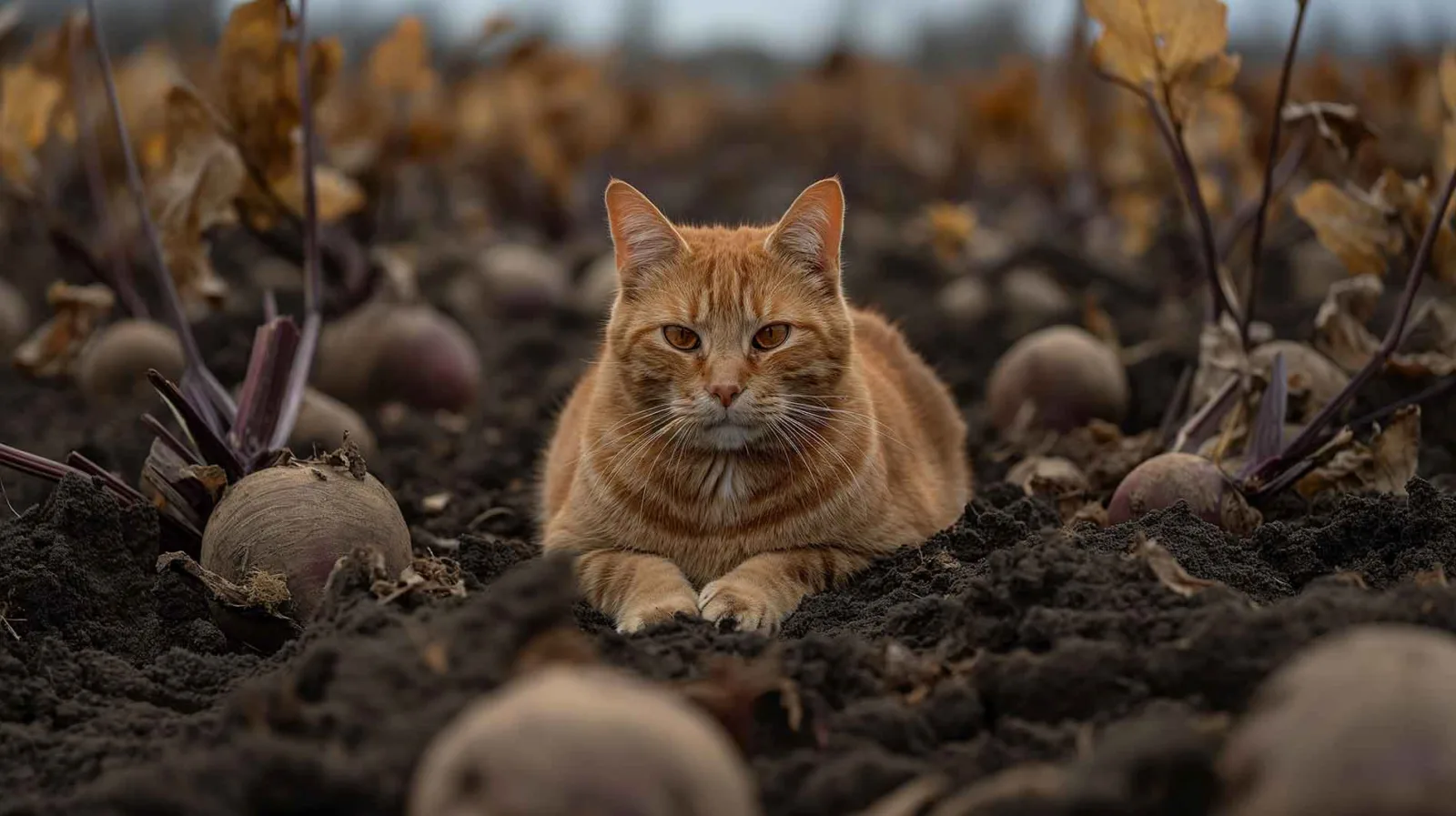
We humans know carbohydrates and sugar mainly as sources of energy. For cats, however, things are different: Cats’ bodies, and therefore their digestion, are adapted to completely different eating habits. They obtain energy from animal proteins. They do not need to consume carbohydrates through cat food. Dry food is particularly bad because it requires additional carbohydrates in order to be baked into shape. We are talking about up to 50% carbohydrates here!5
Cats have a limited ability to digest sugar and other carbohydrates
While they can absorb glucose (a simple sugar) slowly, the processing of highly sugary food results in an increase in blood sugar levels and sugar content in the urine. Compared to dogs, this digestive process is much slower in cats. Interestingly, cats have low activity of the enzymes needed to digest starch and certain sugars, which limits their ability to effectively utilize carbohydrates.7
Like all mammals, the cat brain is powered by glucose. However, cats also derive glucose from protein. Therefore, all dietary components that can be broken down into glucose, sucrose, fructose, or lactose are unnecessary and, in the worst case, harmful. Most cat lovers know that lactose can cause diarrhea. But too much sugar, namely 36% of the dry mass, can also cause diarrhea in a cat. Fortunately, no commercially available cat food contains this much sugar.
What few know:
Her digestion adapts to her diet. This means that if a cat consumes more carbohydrates, her body will extract glucose from these, not just from proteins. However, this requires that the cat receives a minimum amount of protein. Although cats can use starch as a source of metabolizable energy, their ability to down-regulate protein utilization is limited.6
Incidentally, cats have no amylase in their saliva, which is the enzyme that in humans pre-digests bread in the mouth to such an extent that we can taste the sweetness of the sugar in it. In cats, it is mainly found in the small intestine.6
Does sugar cause diabetes or obesity in cats?
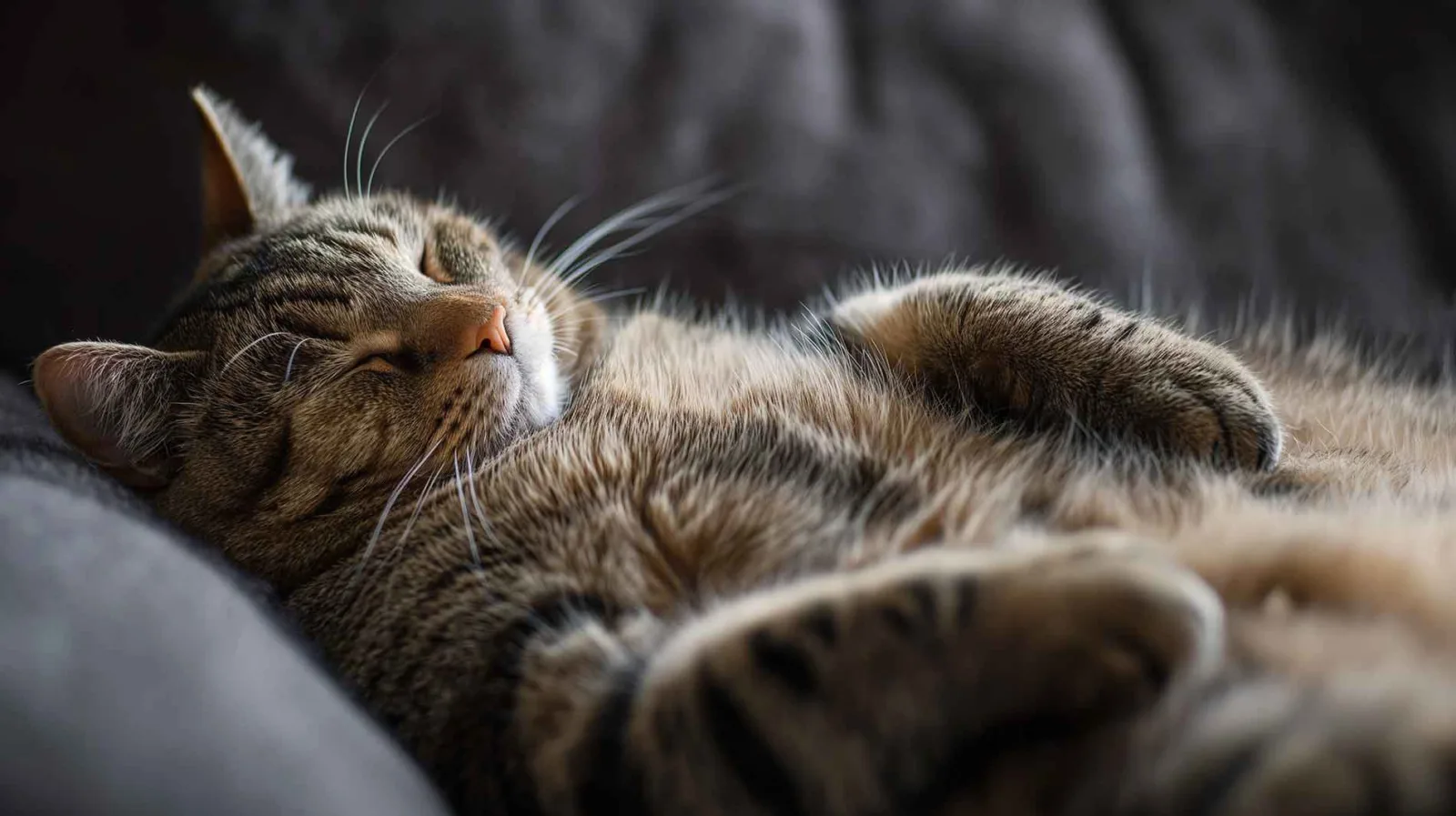
The causes of both diabetes mellitus and obesity in cats are not fully understood, but the increased blood sugar in the blood mentioned above is something that no cat needs. So why take the risk? If we look at the natural prey of cats and their wild ancestors, it quickly becomes clear that this consists mainly of small animals, i.e. meat.
While we know that humans can develop obesity if they consume too much sugar regularly, there is not enough scientific research on the consequences of long-term high-carbohydrate or high-sugar wet or dry cat food.7
Cancer risk due to sugar in cat food
The Maillard reaction mentioned above produces by-products such as hydroxymethylfurfural. Studies have predominantly reported negative effects on human health, for example, HMF is harmful to mucous membranes, skin, and respiratory tract, can cause mutations, damage chromosomes, and cause cancer in humans and animals.8 The average intake of hydroxymethylfurfural (HMF) in commercial cat food is 38 times higher than in adult humans.9
With all the risks, why are sugar and carbohydrates still present in cat food?
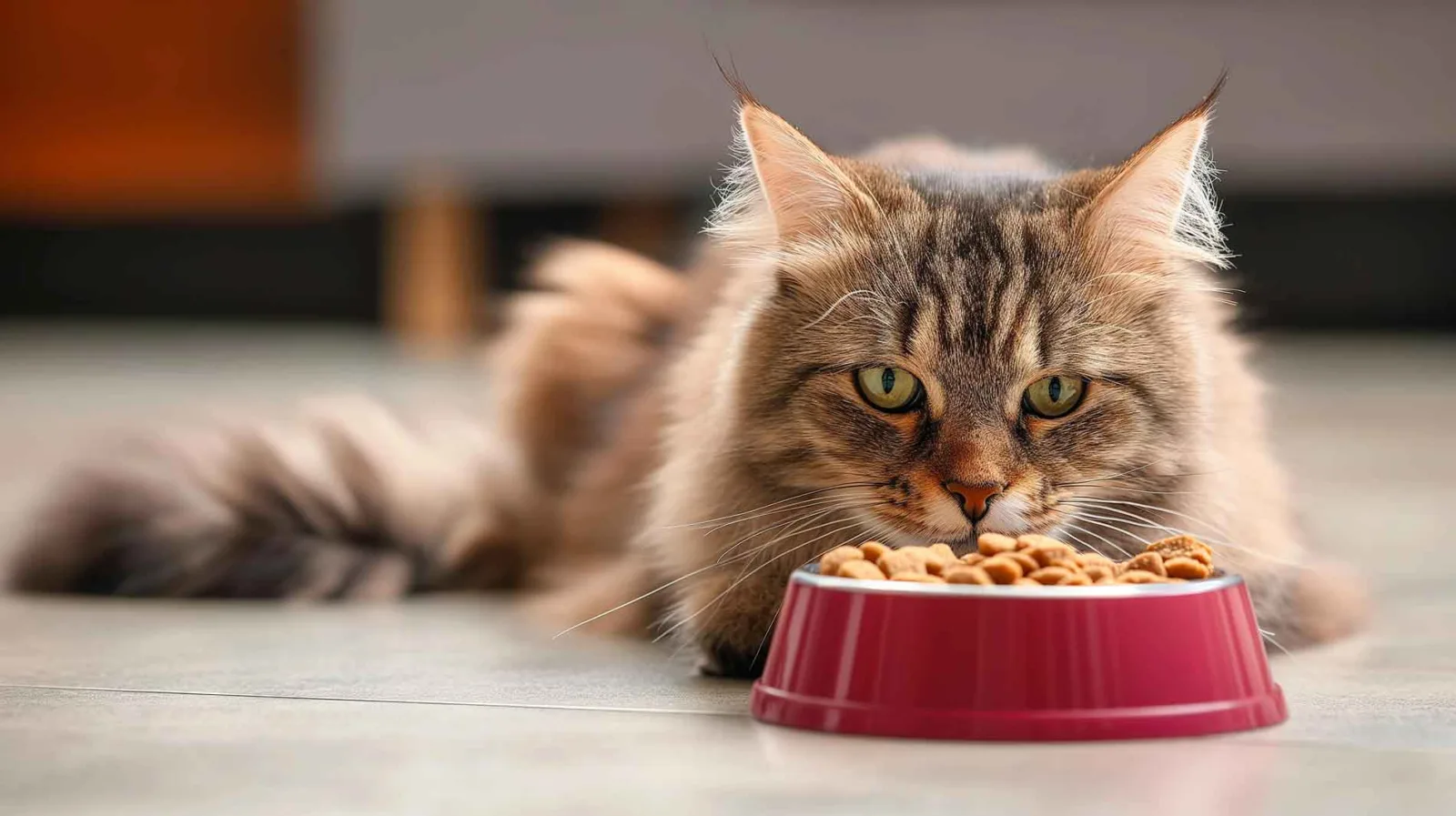
Firstly carbohydrates and sugar are cheaper than animal protein, which is how pet food manufacturers maximize their profits. Secondly, sugar is used to supplement cheep food to smell and look better to us humans. It is up to each individual to decide whether a low price, high availability, and roasted aromas justify the risks mentioned.
High-quality cat food contains no sugar
Our advice as cat lovers is that if your pet doesn’t need something essential for survival, it shouldn’t be in their food because we don’t think it’s worth the risk. Pets are dependent on their owners because they only eat what they are fed. That’s why investing in high-quality cat food without sugar is an easy decision.
You can check our Product Tests and Cat Food Reviews to find the best – sugar free – meal for your cat
We hope this article has answered your burning questions about sugar in cat food. Do you know someone who would benefit from this article? Then feel free to share it now.
